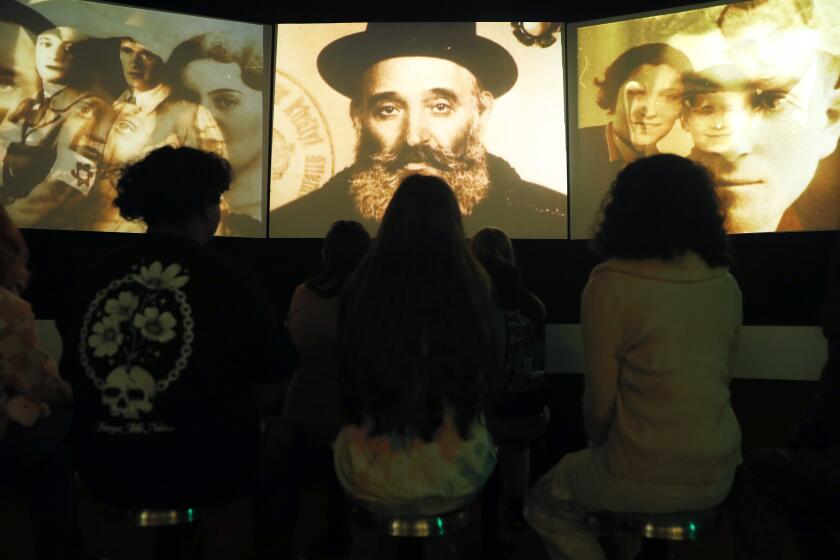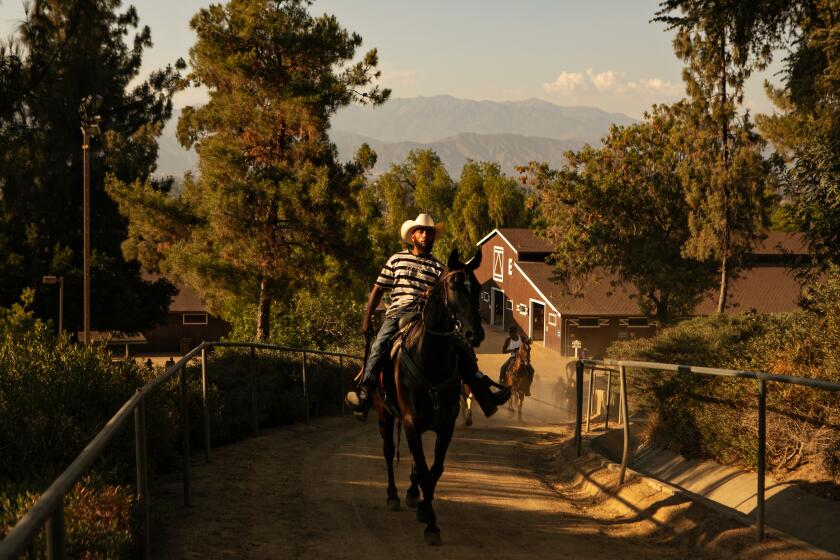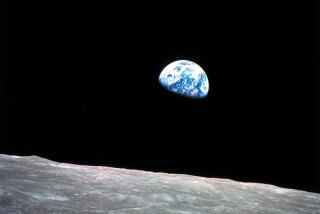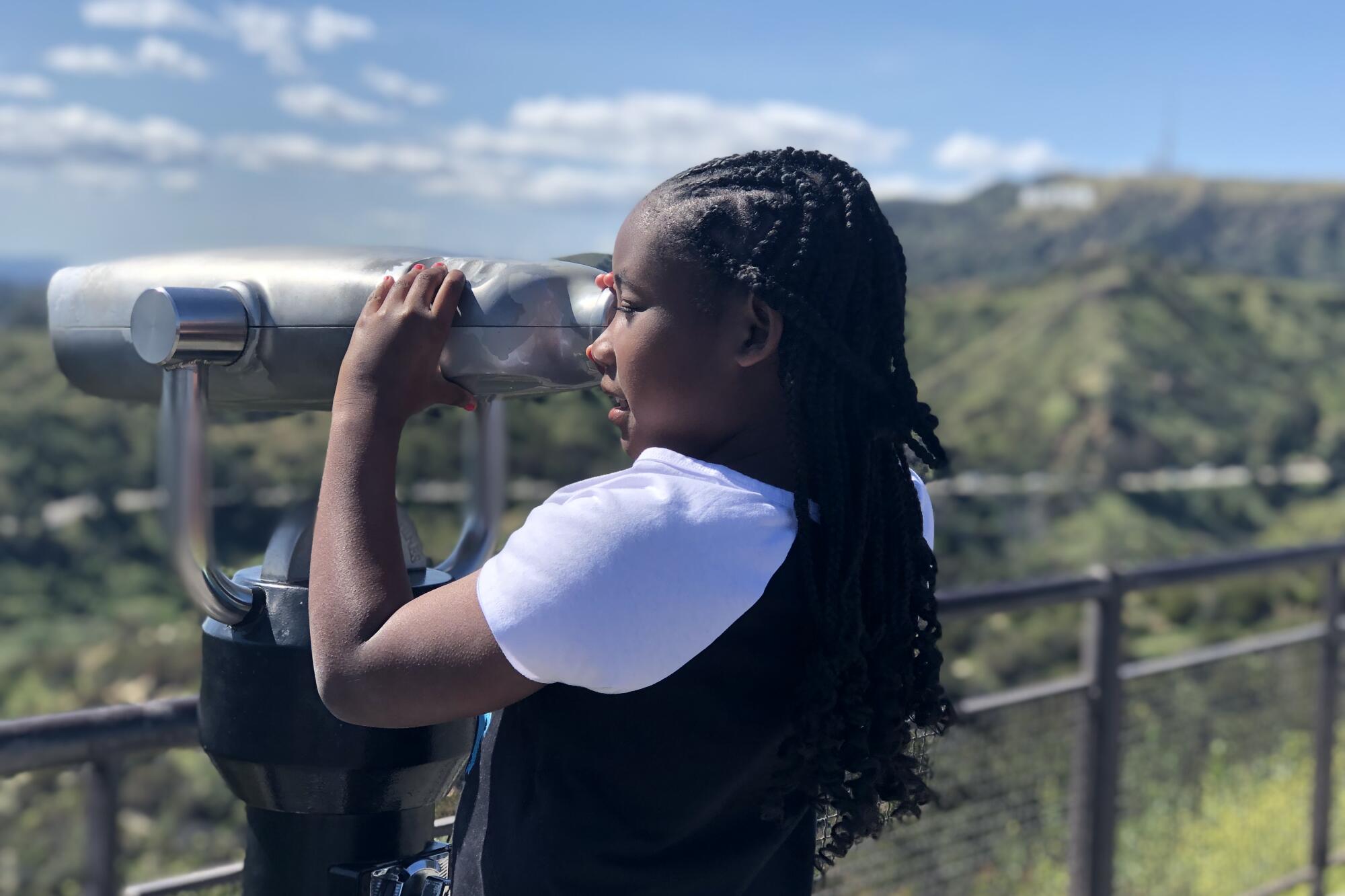
The heavens give off a bittersweet glow for Black Americans.
They have been a harbinger of trauma. Enslaved Africans were ferried across the Atlantic Ocean by sailors tracking the stars and constellations to chart their course. When the full moon lit up the evening sky, many slaves were forced to toil beyond their grueling sunrise-to-sunset hours.
The cosmos has also represented freedom. Harriet Tubman looked to the North Star to point the way for the Africans she helped escape from slavery, and Frederick Douglass named one of his abolitionist newspapers after it. During the civil rights and Black Power eras, the visionary jazz musician Sun Ra, a self-described alien abductee, sang that “space is the place” where the racial justice and universal love he yearned for would finally come within reach.
So when astronaut Victor Glover Jr. made history by being chosen as the pilot for NASA’s Artemis II moon mission, the Pomona native sprinkled fresh stardust on the hopes and dreams that his fellow Black Americans have long projected into the infinite void.
It’s been more than half a century since Neil Armstrong became the first human to set foot on Earth’s only natural satellite. Some Black Americans said they thought they’d never see the day when one of their own would be poised to do the same.
When told of Glover’s role in the moon mission, Kevin Jones and Paige Weathersby looked awestruck as they dined on curries at Hilltop Jamaican Market and Restaurant in Pomona’s central business district.
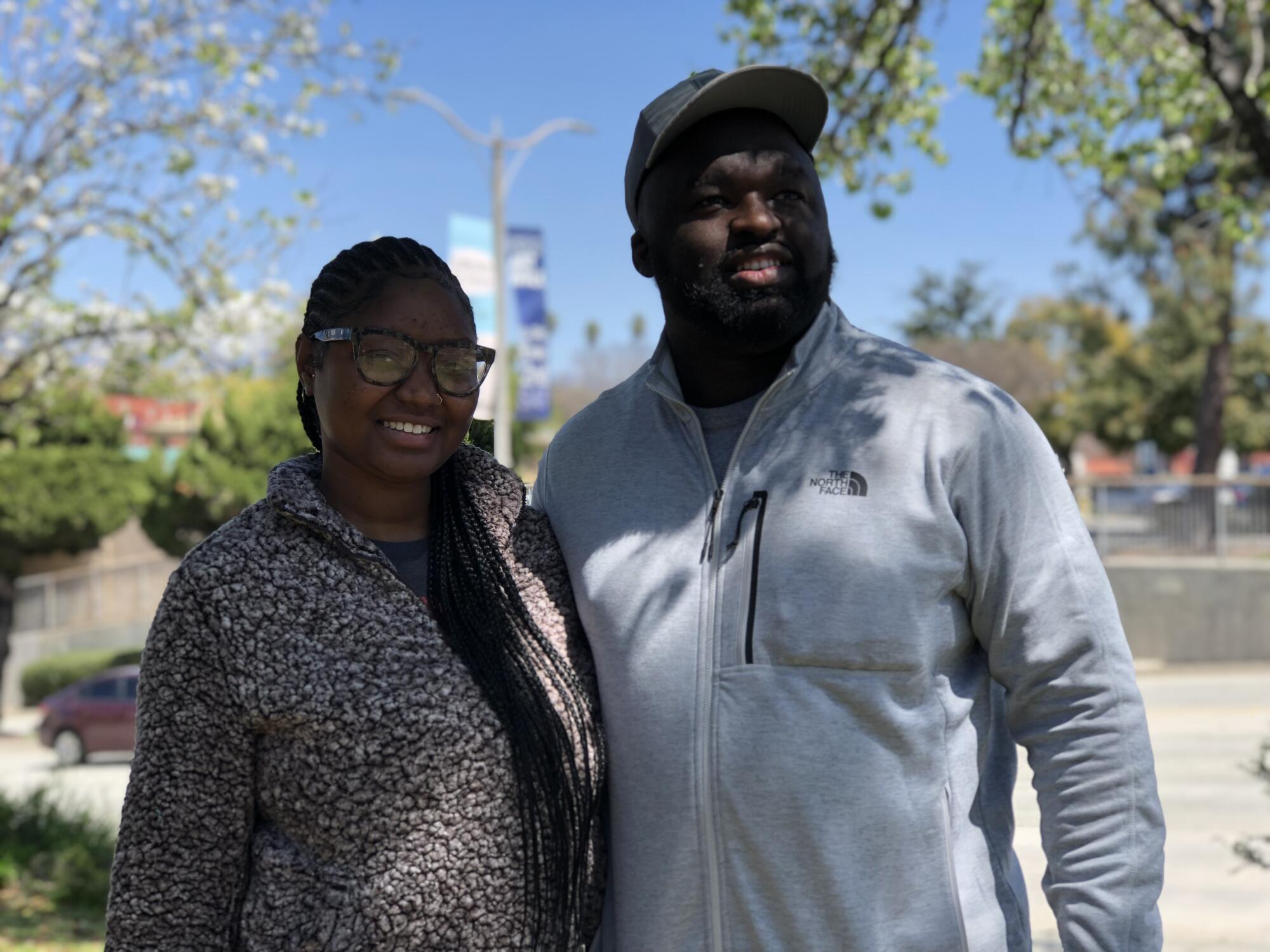
Just think of it, the 23-year-old Weathersby says: “In America — less than 100 years ago — we were fighting for our rights and we weren’t even seen as full citizens.”
Weathersby, who lives in Fontana, and Jones, who lives near Temecula, are doctoral candidates in pharmacy at Western University of Health Sciences located a few blocks from the restaurant.
Jones, 37, says Glover’s lunar mission is all the more gratifying because his son Aiden, 7, wants to be an astronaut. The proud father pulls out his phone to show a picture of Aiden grinning inside his kid-sized NASA spacesuit.
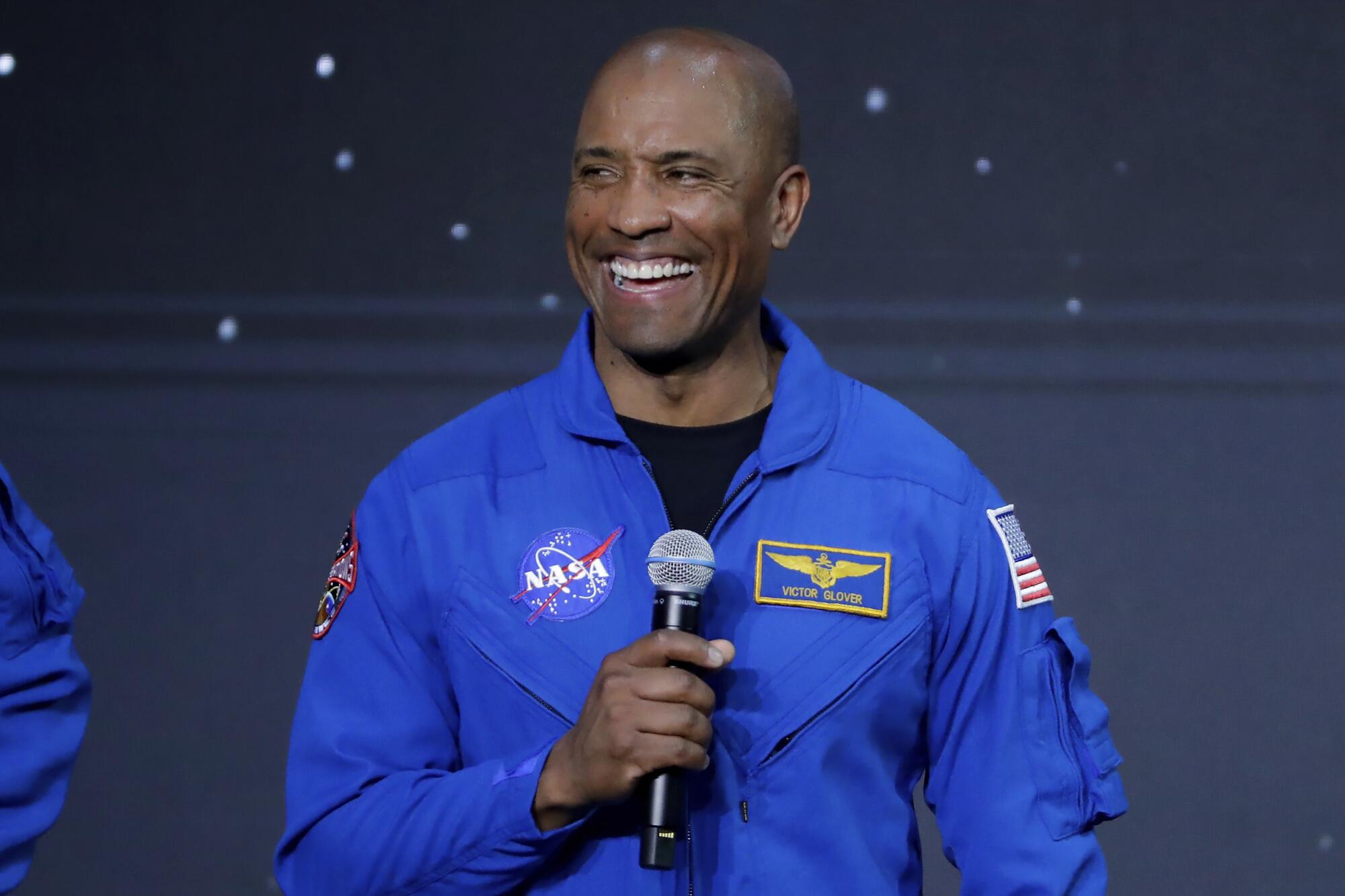
That feeling of shared triumph over Glover’s pioneering mission to help establish the first permanent base on the moon — of the arc of the Black experience stretching beyond what earlier generations would have thought possible — also infused the sentiments of Black Americans visiting Griffith Observatory in Los Angeles. In the 1960s, some of the astronauts in the Apollo program trained for the nation’s first moon mission in its planetarium.
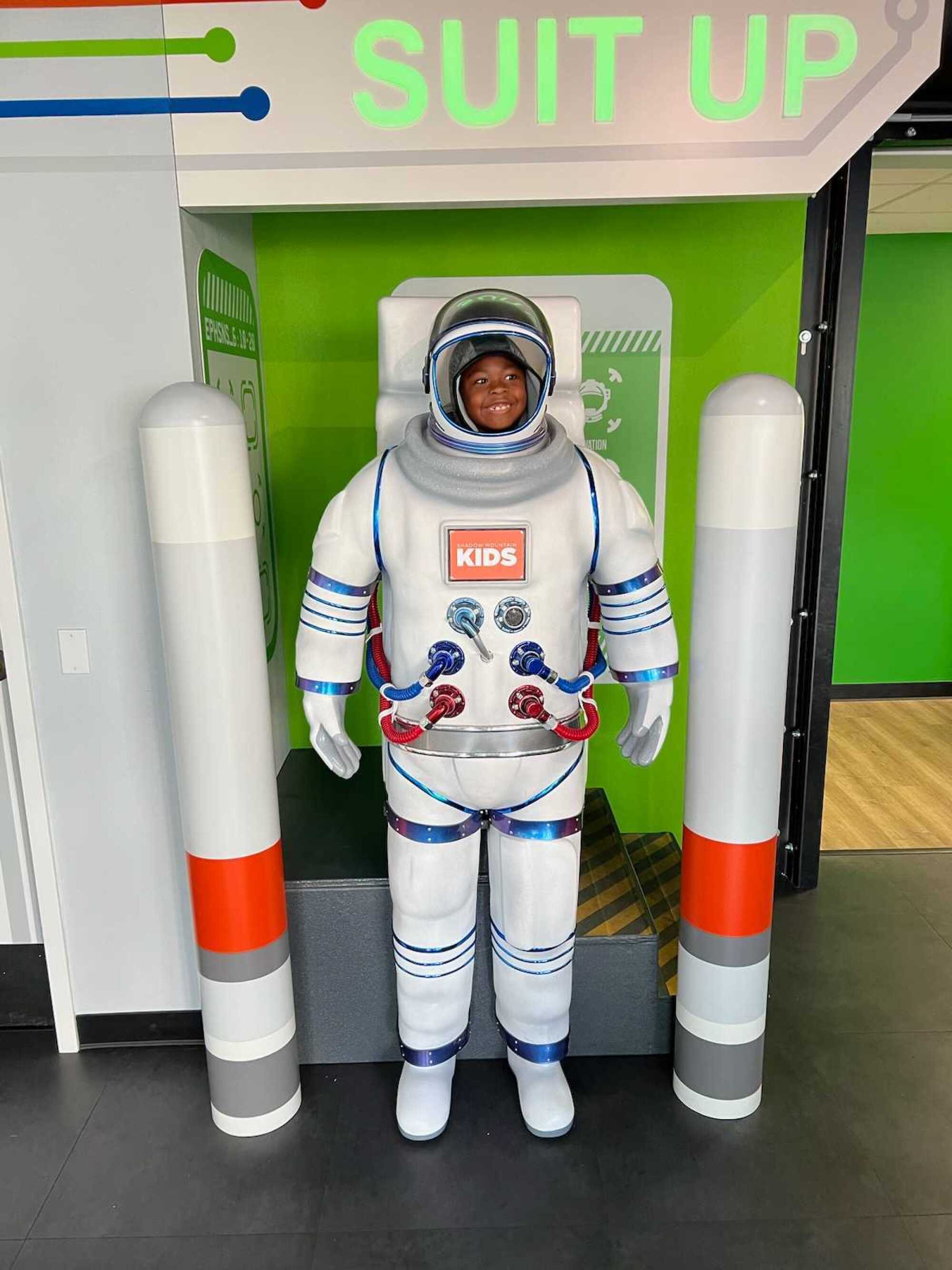
Aaron Powers, a management consultant who lives in Los Angeles’ Highland Park neighborhood, looked giddy. The self-professed “sci-fi nerd” was entertaining his niece Sydney Powers, who was visiting from Evanston, Ill.
“When my niece was born, I as the proud uncle always wanted her to have access to everything in the world — to go and see whatever she wants to see,” says Powers, 36. “So now, to be able to see this mission going up, to have her with me today, it’s sort of like all of those hopes and all of those dreams — all of those promises — actually feel more real.”
California archaeologist Ayana Omilade Flewellen sees the war on AP Black studies and other teachings as a sign that America isn’t ready to confront injustice.
The late Black speculative-fiction author Octavia Butler, a Pasadena native and a leading voice in the Afrofuturism cultural movement, once described astronauts as “our surrogates, because they go where we can’t go. And in a sense, they take us along with them.”
Powers can’t wait to tag along with Glover and rest of the Artemis II crew — in spirit, anyway.
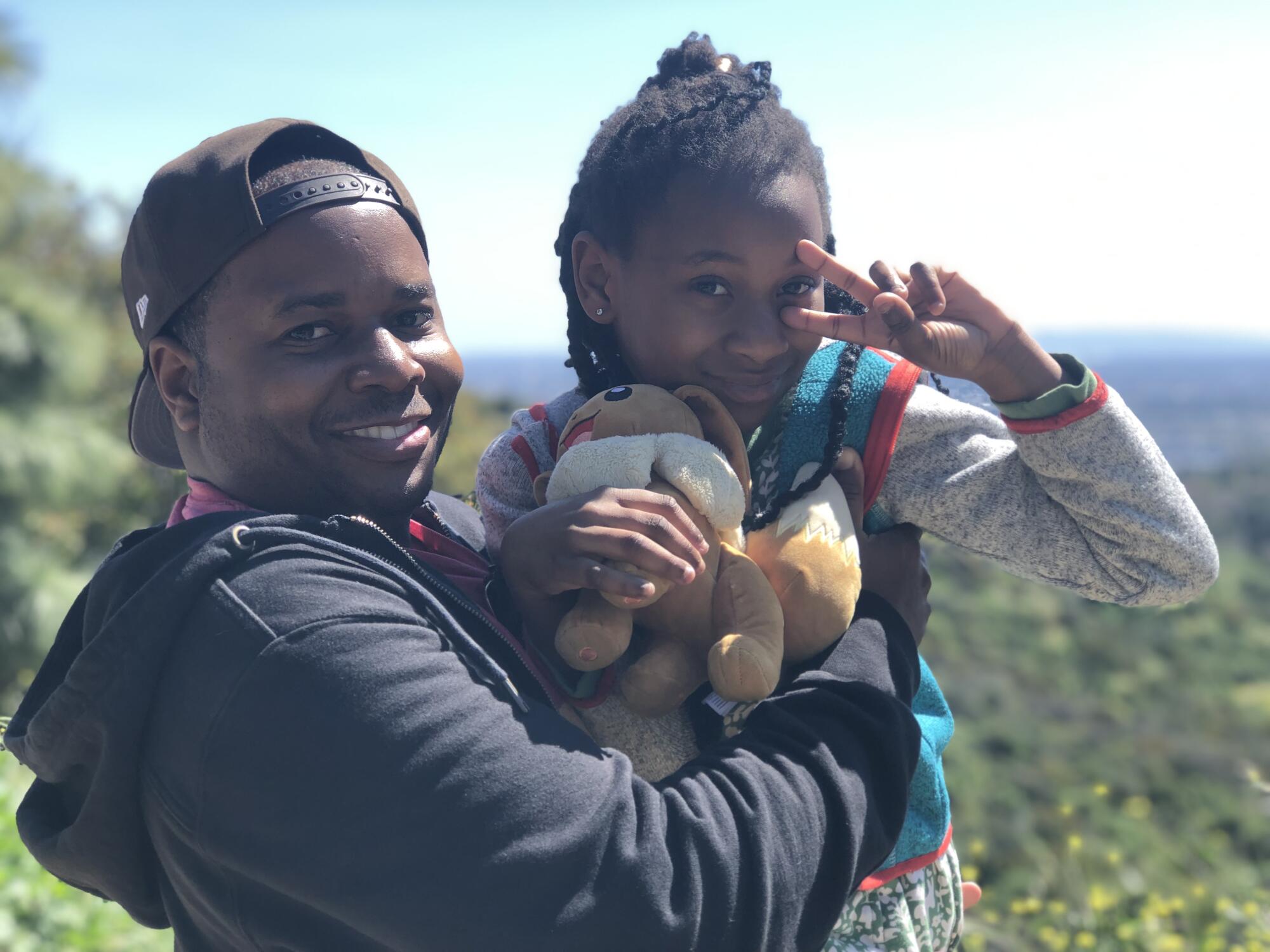
He sighs and lets his eyes scan the breathtaking panorama of L.A. Up here, 1,134 feet above the urban sprawl, there’s nothing but the beauty of nature, the grandeur of the observatory’s arches and domes, and a brisk wind that fills the lungs.
“You can’t see all the things that are going on down below that are perhaps less beautiful — less optimistic,” Powers says.
You can’t see the crippling joblessness, homelessness or injustices that disproportionately hit Black people.
“It’s hard enough to try to find a place to exist here on Earth every day,” he says.
At the height of the space race — when many Black Americans were more preoccupied with conquering racism and poverty than putting a human on the moon — the Rev. Martin Luther King Jr. claimed to have looked down from a mountaintop and seen the promised land for his people. Powers wonders: What kind of future for Black people will Glover see when he contemplates their struggles and triumphs from a distance of 238,900 miles?
The spike in antisemitism and other hate crimes in L.A. is grim, but a Jewish neighborhood in L.A. offers glimmers of hope.
Outside the observatory, Shimira Greene, a senior IT network engineer at UCLA, wears a shirt with an image of the Tuskegee Airmen. She dons mirrored aviator shades. The wardrobe choice is meant to honor the legendary group of pilots who fought in World War II and to celebrate Glover’s continuation of the legacy of Black aviators.
The Tuskegee University alum came to buy a model solar system in the gift shop — a present for a 9-year-old niece in the Washington, D.C., area who’s taken an interest in aviation and who’s coming to visit this summer.
Greene, 41, grew up watching “Star Trek” TV episodes and movies, and she also wondered whether she’d ever see Black Americans take part in the exploration of space beyond Earth’s orbit. She says Glover landing on the lunar surface someday is powerful because of what it telegraphs about Black people’s ability to overcome adversity.
“It’s just another show of our excellence,” Greene says, “another notch in our belt in terms of what we’re doing for the country.
“We have proven over and over again that you can’t hold us back.”
Greene realizes that some Americans might have a hard time grasping the significance of Glover’s selection, especially given that other Black astronauts have already orbited the Earth, and the fact that Glover has traveled to the International Space Station with a SpaceX crew and has conducted four spacewalks. Movies like “Hidden Figures,” starring the space-loving singer, actress and sci-fi author Janelle Monáe, have taught Americans about Black people’s behind-the-scenes roles in the early days of NASA, a time when Black Air Force pilot Edward J. Dwight Jr. was passed over for a chance to join a space crew purportedly because of his skin color.
There’s just something next-level about a Black person exploring the vastness that has resonated so poignantly in the collective imagination, Greene says.
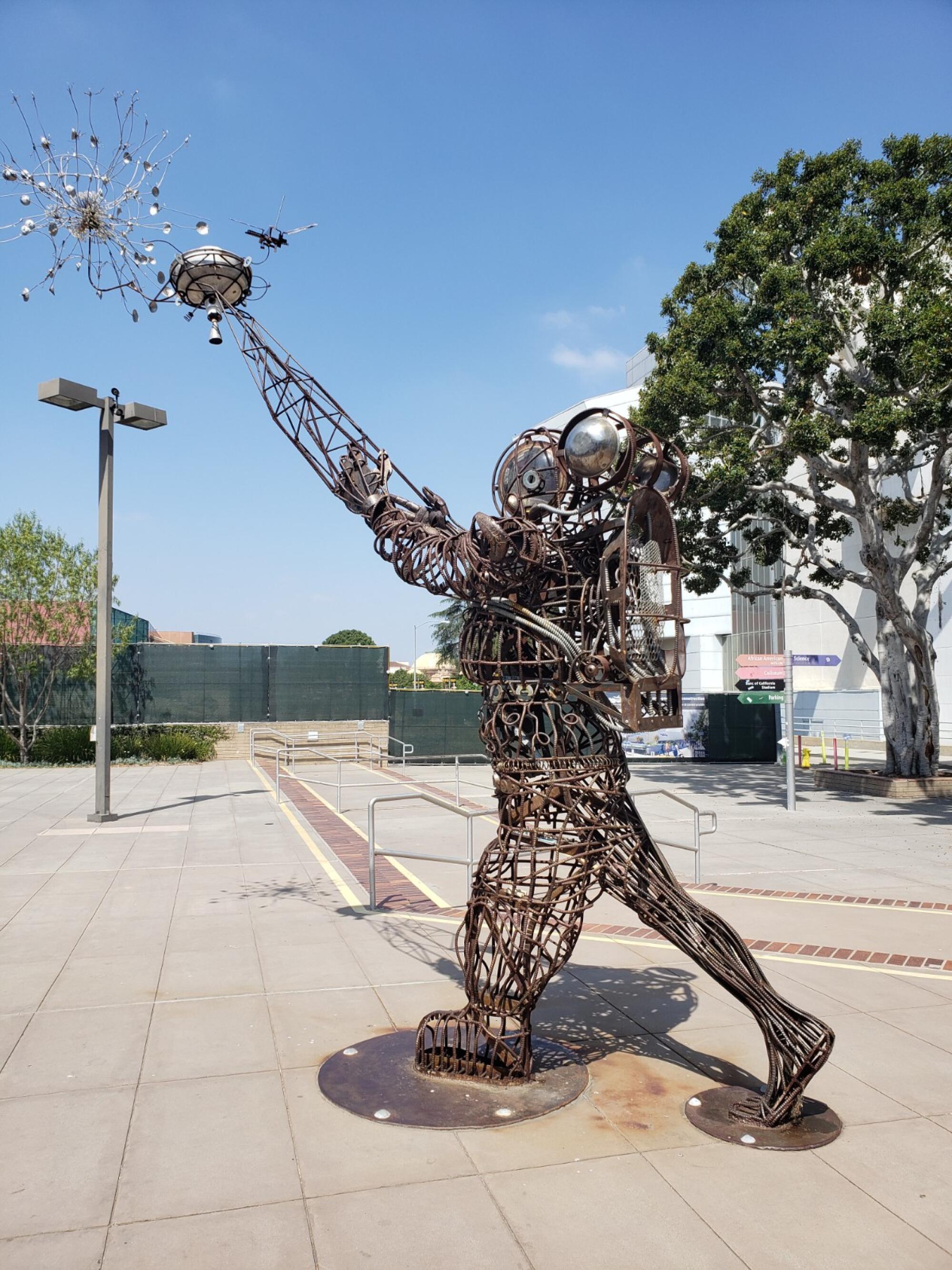
The moon is “the white beacon that so often agitated the slave with a mind to run,” as Colson Whitehead writes in his Pulitzer Prize-winning novel, “Underground Railroad.”
In the antebellum South, slaves secretly plotted their escapes by passing to one another instructions in songs that had double meanings: “When the sun come back, when the first quail call, follow the drinking gourd,” goes one.
“Gourd” was code for the Big Dipper. It pointed north toward freedom.
‘In these spaces, it’s safe to be us’: California’s Black trail riders, rodeo stars and ranchers find fellowship and spiritual freedom in rural traditions.
Taking inspiration from another slave-era song as well as from sci-fi, George Clinton’s band Parliament-Funkadelic used to thrill concertgoers with performances of their anthem “Swing Down Sweet Chariot.” They’d lower a life-size model of a space capsule, dubbed the “Mothership,” onto the stage, sparks shooting from its landing gear. Fans were beckoned to “put a glide in your stride and a dip in your hip,” metaphorically climb aboard and liberate themselves from their earthly oppression.
The Mothership is so emblematic of Black people’s collective desire for transcendence that it now resides in the National Museum of African American History and Culture in Washington, offering an uplifting counterpoint to displays of relics from slave ships.
Glover himself seemed to recognize the power of the heavens to transport the soul when he posted Instagram pictures of sunrise from the space station in 2021. The Earth’s atmosphere is ablaze with bands of color: “They remind me of the scripture in Psalm 30, ‘weeping may endure for a night, but joy cometh in the morning,’” his caption reads.
The news about Glover unleashed a flood of childhood memories and emotions in me, too. I also once aspired to be an astronaut and spent hours studying the stars, planets and constellations. Squinting into the inexpensive telescopes my parents bought me, I gasped at the sight of Jupiter’s swirling red storm, Venus’ greenish glare, distant star clusters, Halley’s Comet and the pitted barrenness of the moon. For fun, I’d close my eyes and visualize taxiing through the galaxy like Lando Calrissian in the Millennium Falcon.
It never occurred to me either that a Black person might actually get to travel to another celestial body.
Suddenly, the promise of the cosmos feels as accessible as those Sun Ra and P-Funk songs suggested.
On the terrace in front of the observatory, the Jenkins family from Atlanta take turns peering through rotating scopes at the mountains, the city, the ocean and the crisp blue sky.
Troy, 42, a medical device salesman, and Nicole, 42, a human resources director, had just heard about Glover and they are overjoyed. Their children, Carter, 7, and Avery, 9, love anything related to science.
“Our children are seeing African Americans winning Oscars, being president, and now being able to travel to the moon — all in their lifetime,” Troy says.
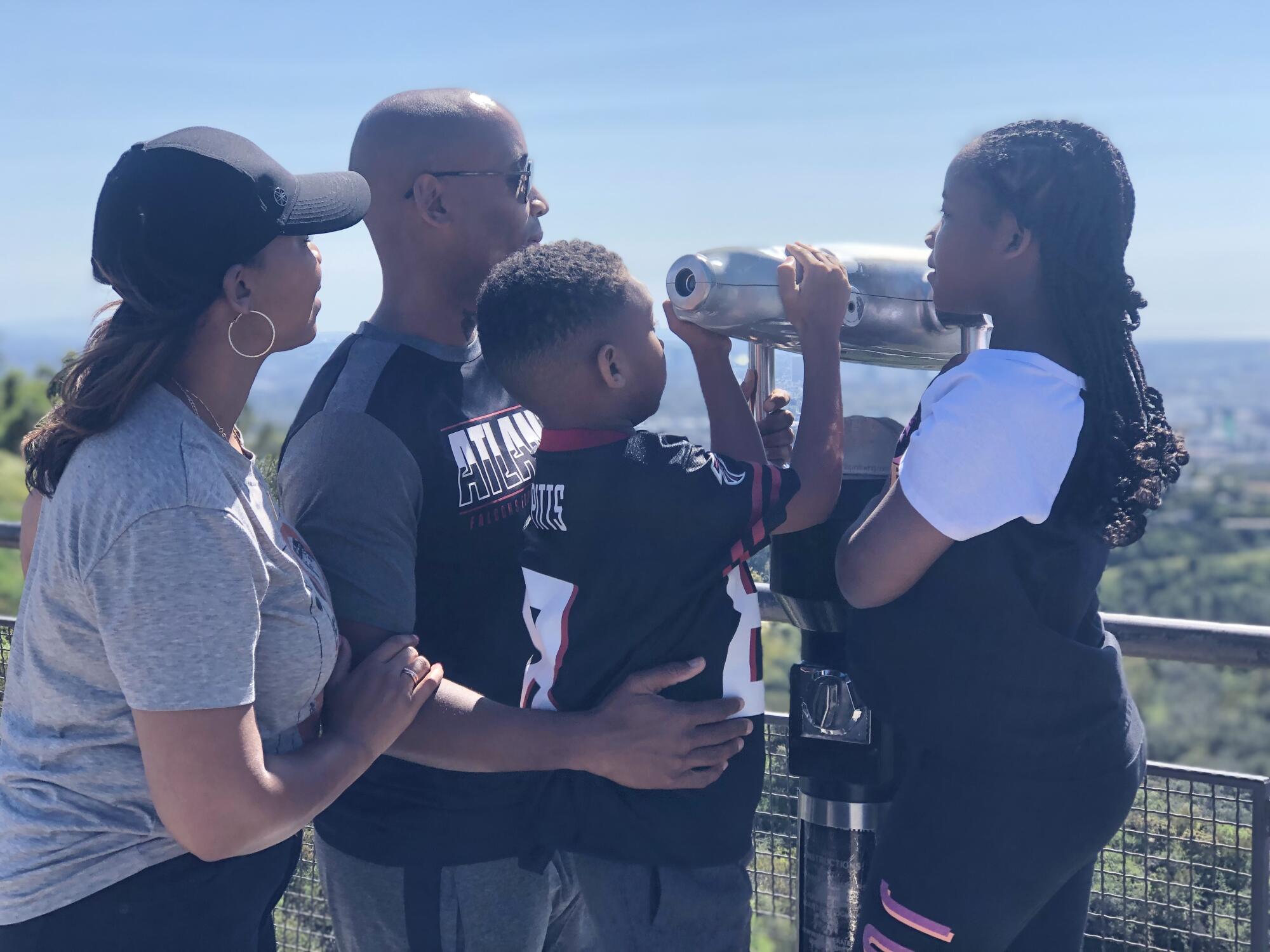
The couple think back to the times their parents and grandparents told them the same thing Powers tells his niece — that they could be anything they wanted to be. It must have stung for the older generation of Black Americans to instill such a positive message, while suspecting that the world might have lesser plans for their children because of the color of their skin.
Troy says that Carter loves to watch space mission launches on TV and that Avery always seems transfixed whenever tennis great and Compton native Serena Williams appears on the screen. He quickly realized that her rapt expression was rooted in the fact that as a Black girl, she can identify with the champion.
As Jones, the doctoral candidate in Pomona, put it: “The more you see it, the easier it is to envision yourself doing it.”
When Glover launches into space and shoots past Earth’s atmosphere, he will set a whole new horizon for an entire race. The Jenkinses say they will be watching.
They can’t wait for the day when they can look to Carter and Avery and tell them with total confidence that when it comes to their aspirations, not even the sky is the limit.
More to Read
Sign up for Essential California
The most important California stories and recommendations in your inbox every morning.
You may occasionally receive promotional content from the Los Angeles Times.


